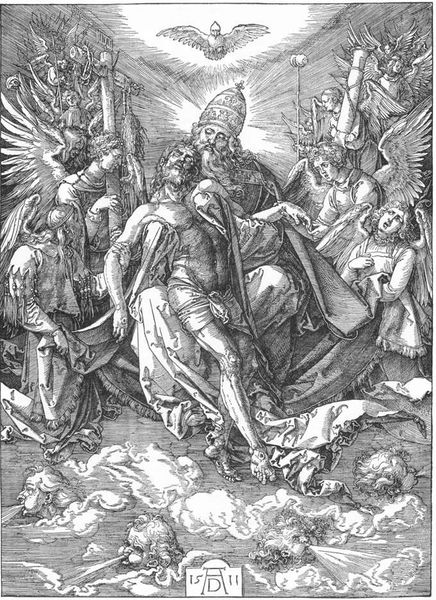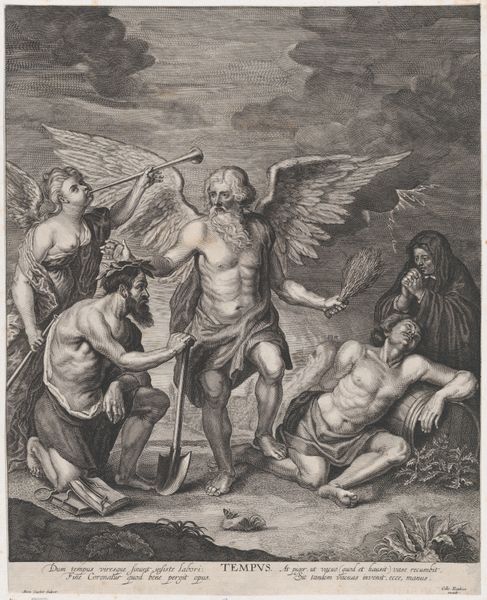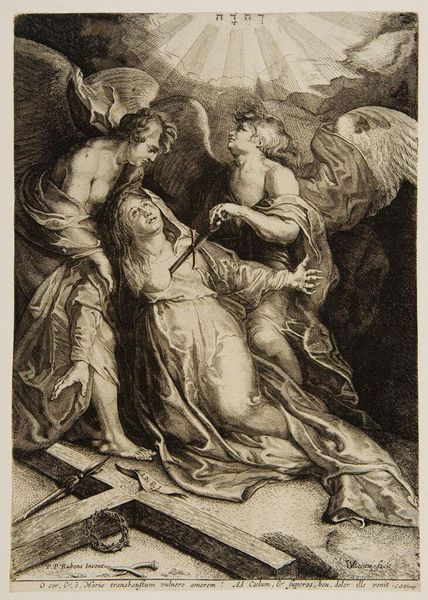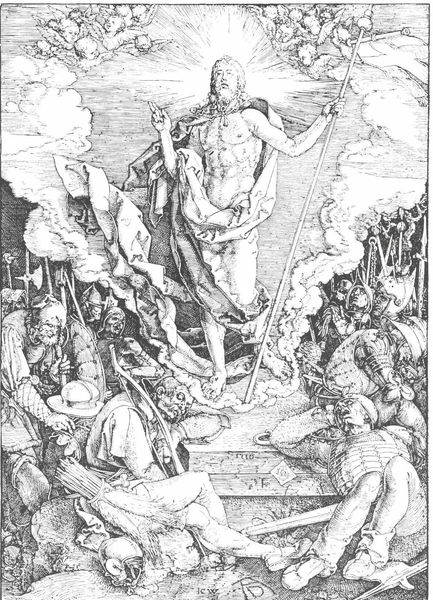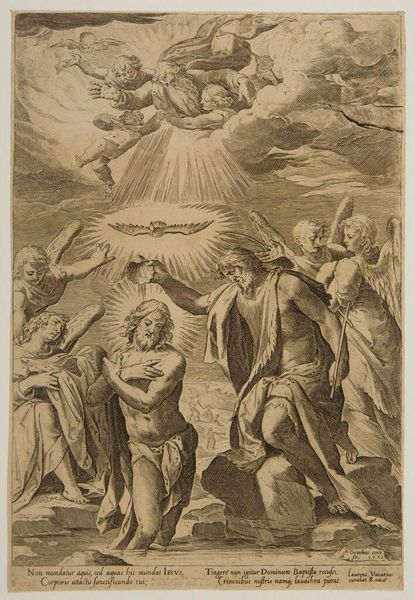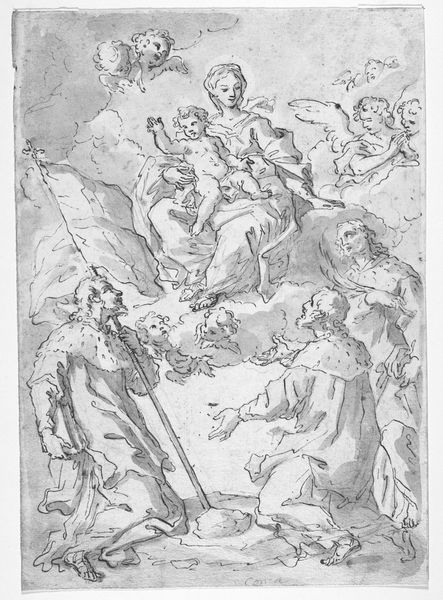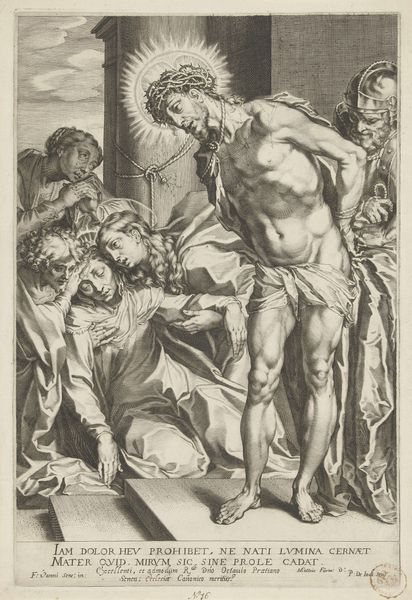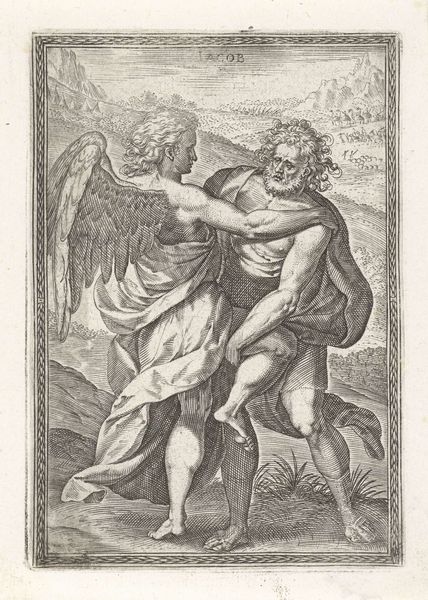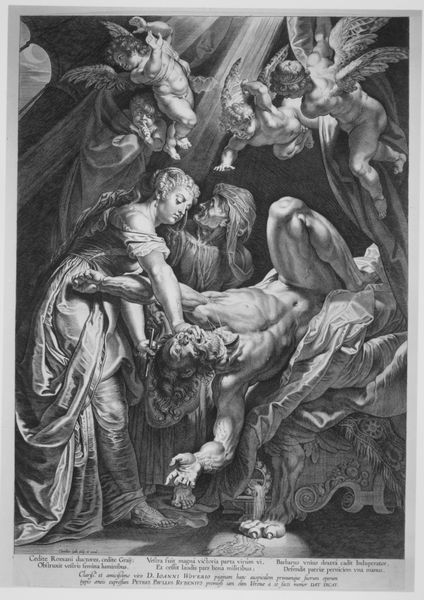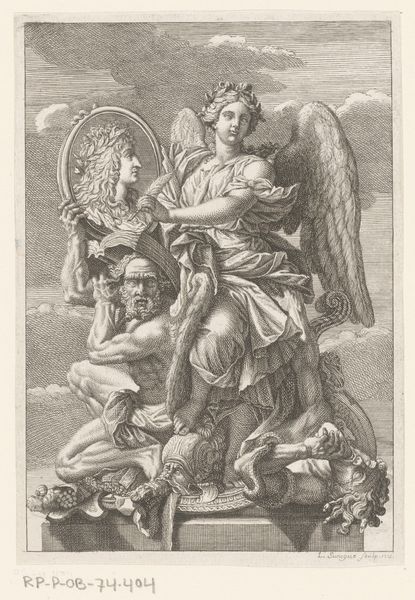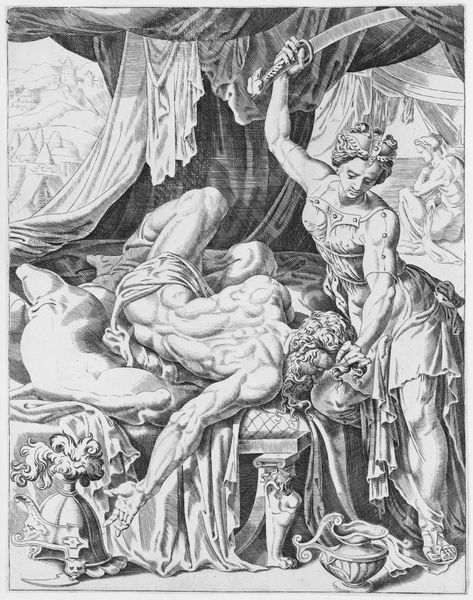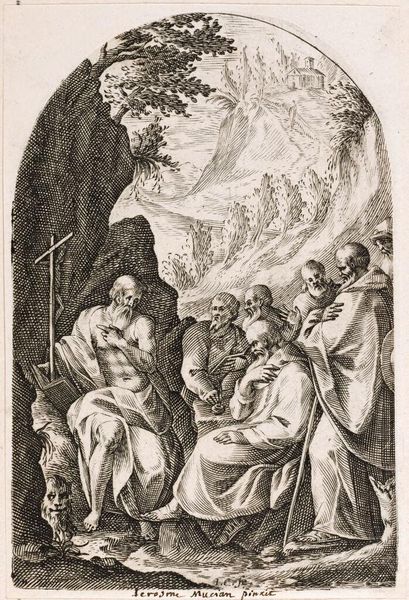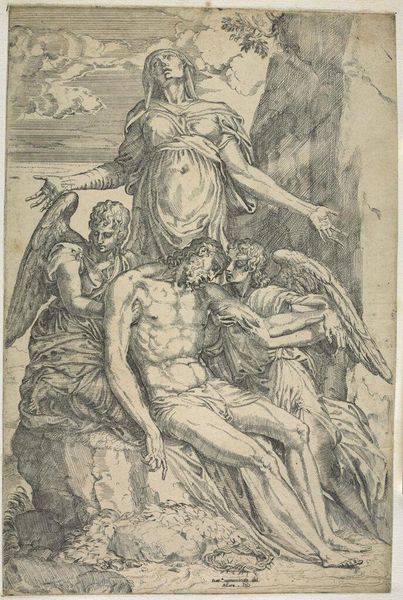
The Body of Christ Supported by Three Angels 1516
0:00
0:00
drawing, print, engraving
#
drawing
# print
#
figuration
#
history-painting
#
italian-renaissance
#
engraving
Dimensions: sheet: 11 5/16 x 8 5/8 in. (28.8 x 21.9 cm)
Copyright: Public Domain
Curator: Agostino Veneziano created this engraving, “The Body of Christ Supported by Three Angels,” in 1516, as part of the Italian Renaissance. It's currently held in the collection of the Metropolitan Museum of Art. Editor: The somber mood is overwhelming; Christ's body, pale against the swirling lines indicating the sky, creates such a tangible sense of grief. The wings of the angels nearly consume the frame, offering a fragile protection. Curator: It certainly captures the sorrow inherent in the deposition theme. The angels supporting Christ, they are not just figures but rather conveyors of cultural grief, echoing countless depictions across time. Their gestures – one touches Christ’s side, another supports his head – embody collective compassion. It brings to mind the long history of using the haloed winged figure in funerary art and medieval icons. Editor: Thinking of similar depictions, especially within the context of the Renaissance, it is curious how this print might have functioned in society. Engravings democratized images; a powerful image like this could circulate more widely than a painting commissioned by the elite. The visual messaging must have had profound socio-political impacts as images migrated to reach different kinds of audiences. Curator: Precisely. The choice of engraving allowed Veneziano's piece to proliferate beyond a select few. It provided broader access to a spiritual image, strengthening its emotional connection to viewers as an open reminder of mortality. Look how carefully he engraved the face of Christ. There is this idea of redemptive suffering that became much more popular with religious reforms across Europe. Editor: Yes, seeing the traces of Christ's physical torment—the marks of the crucifixion—and placing it within this public visual language meant the artwork's influence was vast. Each impression shaped how communities contemplated devotion. Even the ladder looming on the back may hint toward an artistic and public discourse. Curator: In the historical trajectory of imagery, it bridges the iconography from panel paintings to widely-circulated devotional prints. Each carefully etched line and figure tells a story far beyond that particular moment depicted in the print. Editor: Ultimately, examining “The Body of Christ Supported by Three Angels” reminds us how images in their original context influence communities through symbolic gestures. Curator: It leaves me pondering how artistic tradition builds on such stories, how symbols survive cultural shifts.
Comments
No comments
Be the first to comment and join the conversation on the ultimate creative platform.
